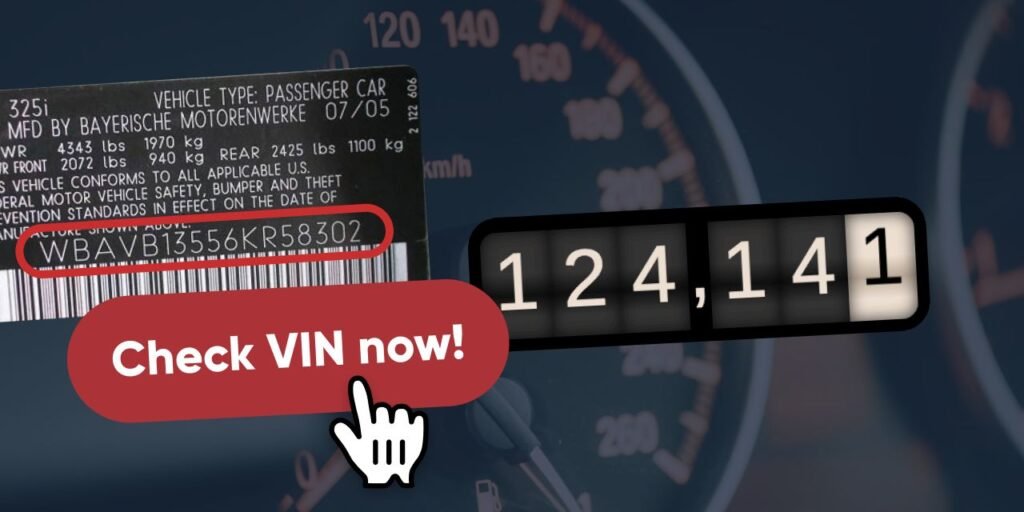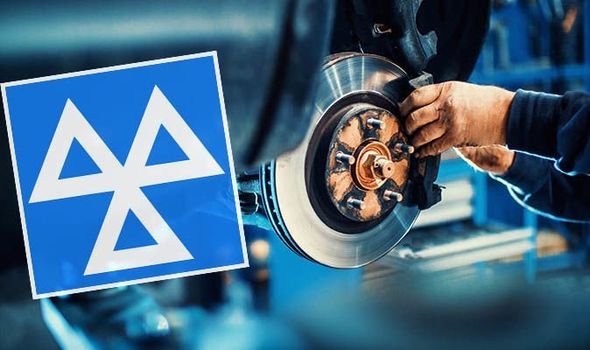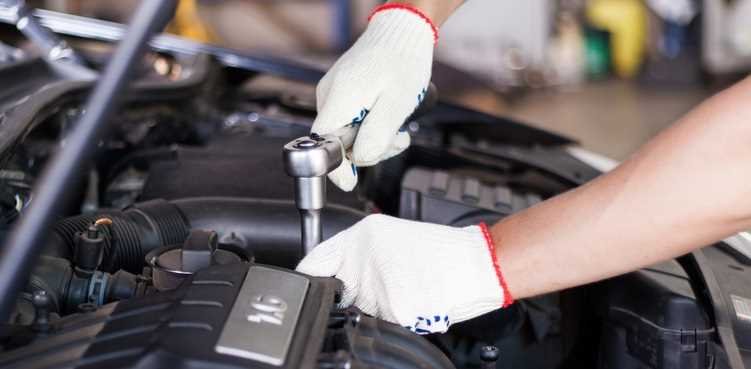Buying a used car in the UK can be exciting — but it can also come with risks if you don’t verify the vehicle’s background. A Car VIN Check helps you uncover essential details about a car’s identity, history, and MOT status before you commit to a purchase.
In this complete guide, we’ll explain what a VIN number is, where to find it, and how to use it to check MOT, ownership, and accident records — ensuring your vehicle is safe, legal, and worth its price.
What Is a VIN (Vehicle Identification Number)?
A Vehicle Identification Number (VIN) is a 17-character code that uniquely identifies every car manufactured since 1981. It acts like your car’s fingerprint — no two VINs are the same.
The VIN reveals vital information about the vehicle, including:
-
Manufacturer and model
-
Year and place of production
-
Engine type and body style
-
Safety and compliance codes
-
Serial number
When you perform a Car VIN Check, you can uncover the car’s full history — including MOT status, insurance write-offs, theft records, and mileage accuracy.
Where to Find the VIN on Your Car
Before you perform a Car VIN Check, you need to locate the VIN. Common places include:
-
Dashboard (visible through the windscreen) – On the lower-left corner of the driver’s side.
-
V5C Logbook (registration certificate) – Officially issued by the DVLA.
-
Driver-side door frame – Often printed on a sticker or plate.
-
Under the bonnet or on the engine block – Some manufacturers engrave it here.
-
MOT and insurance documents – Printed on all official paperwork.
Always make sure the VIN on the car matches the VIN on your V5C logbook — mismatched numbers can indicate a cloned or stolen vehicle.
Step-by-Step Guide to Performing a Car VIN Check in the UK
A Car VIN Check can be done online within minutes. Here’s how:
Step 1: Visit the Official GOV.UK MOT History Checker
Go to the official GOV.UK MOT History Checker.
Enter your car’s registration number to see:
-
MOT pass/fail results
-
Mileage readings
-
Advisory or failure notes
-
VIN confirmation
This free tool verifies your MOT status and ensures your VIN matches the official DVLA records.
Step 2: Use a Reputable VIN Check Provider
You can use third-party platforms that specialize in Car VIN Checks for deeper insights. These include:
-
HPI Check
-
CarVertical
-
AutoCheck
-
TotalCarCheck
These services reveal:
-
Previous accidents or insurance write-offs
-
Outstanding finance
-
Theft or cloning records
-
Imported/exported vehicle data
These checks cost a small fee but offer valuable peace of mind before buying a car.
Step 3: Confirm Details with the DVLA Vehicle Information Service
Visit the DVLA Vehicle Information Service and enter your registration number.
You’ll get:
-
Vehicle make and model
-
Colour and fuel type
-
Tax status and expiry date
-
MOT due date
Cross-check this information with your VIN lookup results for accuracy.
Step 4: Compare VIN Numbers Across All Documents
Make sure your car’s VIN matches across:
-
Dashboard engraving
-
V5C registration certificate
-
MOT and insurance documents
If there are differences, contact the DVLA or the seller immediately. Discrepancies may indicate illegal activity or vehicle cloning.
Why a Car VIN Check Is Essential Before Buying a Used Vehicle
1. Detect Stolen or Cloned Cars
A Car VIN Check helps confirm if a car’s identity has been altered. Stolen vehicles often have fake VINs, making this check vital before purchasing.
2. Verify MOT and Service History
By checking MOT records linked to your VIN, you can ensure the car has been properly maintained and is roadworthy.
3. Spot Mileage Fraud
Some sellers roll back odometers to inflate a car’s value. A VIN check compares mileage data from each MOT to detect inconsistencies.
4. Check for Outstanding Finance
A car with unpaid finance legally belongs to the lender, not the seller. VIN reports reveal if any loans are attached to the vehicle.
5. Avoid Accident-Damaged or Written-Off Cars
A VIN check reveals whether the car was declared a total loss by insurers due to severe damage or flooding.
Understanding the VIN Structure
A VIN is divided into sections that encode different vehicle details:
| Section | Characters | Meaning |
|---|---|---|
| WMI (World Manufacturer Identifier) | 1–3 | Manufacturer & country of origin |
| VDS (Vehicle Descriptor Section) | 4–9 | Vehicle type, engine, and body style |
| VIS (Vehicle Identifier Section) | 10–17 | Year, plant, and unique serial number |
Knowing this structure helps verify if the VIN is genuine and correctly formatted.
Free vs Paid Car VIN Check: What’s the Difference?
| Feature | Free VIN Check | Paid VIN Check |
|---|---|---|
| MOT history | ✅ | ✅ |
| Mileage records | ✅ | ✅ |
| Accident history | ❌ | ✅ |
| Finance & ownership details | ❌ | ✅ |
| Import/export info | ❌ | ✅ |
| Vehicle valuation | ❌ | ✅ |
While free services like GOV.UK provide basic MOT data, paid VIN checks offer full protection against fraud and legal issues.
How Mechanics Use VIN Checks
Professional garages use VIN numbers to:
-
Identify the exact engine and parts required for repairs
-
Track warranty and recall information
-
Ensure correct MOT testing standards
When booking an MOT or service, always provide your VIN so mechanics can access accurate data about your vehicle.
What to Do If Your VIN Doesn’t Match
If your Car VIN Check reveals discrepancies:
-
Do not buy the car until verified.
-
Contact the DVLA or local police to report suspicions.
-
Request written proof from the seller or dealer.
Mismatched VINs are serious red flags — they often signal stolen or tampered vehicles.
Tips for Safe VIN Checking in the UK
-
Always use official or reputable websites for VIN lookups.
-
Never share your personal or payment details on unverified platforms.
-
Double-check the VIN on all car documents.
-
Save and print your VIN report for future reference.
-
Use both registration number and VIN checks for full security.
Common Mistakes When Checking a Car VIN
-
Entering the wrong VIN (one incorrect digit invalidates the result).
-
Ignoring advisory notes on MOT history.
-
Not comparing VINs on multiple car parts.
-
Using only free checks without confirming ownership details.
Avoid these errors to ensure your VIN report is reliable and complete.
How to Check Car MOT with a VIN Number
Your VIN number is directly tied to your car’s MOT record. By performing a Car VIN Check, you can instantly access:
-
MOT test results and expiry dates
-
Mileage history
-
Safety and emissions issues
-
Advisory or failure notes
Visit GOV.UK MOT History Service and confirm that your VIN matches the MOT record provided.
Benefits of Doing a Car VIN Check Regularly
-
Confirms legal ownership
-
Maintains resale value
-
Ensures accurate insurance quotes
-
Detects issues before MOT failure
-
Promotes safer driving
A Car VIN Check is one of the easiest and most cost-effective ways to keep your vehicle safe and compliant with UK road laws.
Performing a Car VIN Check is an essential step for every vehicle owner or buyer in the UK. It gives you a clear picture of a car’s condition, MOT compliance, and ownership legitimacy.
By taking a few minutes to verify your car’s VIN online, you protect yourself from fraud, legal trouble, and unexpected costs — while ensuring your vehicle remains safe, reliable, and roadworthy.
VIN Lookup UK: How to Check Car MOT and Vehicle History with VIN
Vehicle Testing Explained: How MOT Testing Ensures Vehicle Safety
Car Inspection Service: How Pre-MOT Vehicle Checks Save You Money



